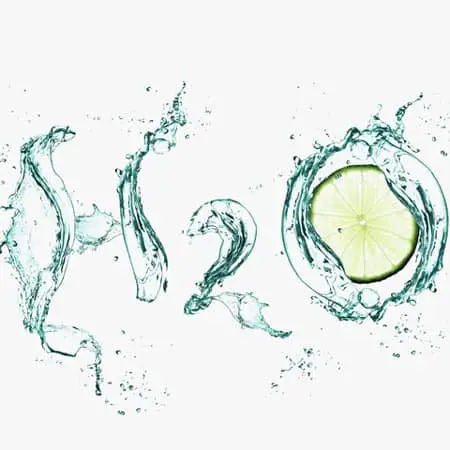Whenever we hear talk about physical activities of any kind, the emphasis always lies on the importance of keeping hydrated. This seems to make all the sense in the world, but the matter is not quite as clear-cut when it comes to the practice of yoga. The question that’s on the minds of many practitioners is whether to drink water or not during yoga.
Don’t drink water during your yoga sessions. Taking water while your session is ongoing runs counter to yoga’s basic precepts and diminishes the benefits we gain from its practice. Proper hydration well before and soon after each session is best.
The long answer is a lot more nuanced and involved. The importance of proper hydration is by no means denied or dismissed in the world of yoga, but factors such as the type of yoga being observed, the physical condition of the practitioner, and more need to be considered. Let’s see if we can’t untangle this knot just enough to arrive at an enlightened conclusion.
Why You Should Not Drink Water During Yoga
At the heart of the argument against drinking water during your yoga session is its effect on your practice’s quality and effectiveness. When you perform any yoga pose, your mind, body, and breathing work together to generate and raise your Ushna, or internal heat; this inner ‘fire’ is what works to transform and purify your body.
Now, the rhythmic, controlled breathing technique you practice is referred to as the Ujjayi Pranayama, and you can liken it to a wind fanning the flames of your internal furnace, or Ushna. It is also instrumental in getting your mind to focus and turn inwards, deepening your meditative state, and reducing the chances of distraction.

With these two considerations in mind, the problem becomes much clearer:
- For one, taking water into your system will serve to ‘put out’ the internal fires you are striving to build up through your asanas and transitional vinyasa. You will be effectively working against your very own ends and significantly reducing the benefits of practicing Ujjayi in your session.
- Secondly, the very act of pausing to take a sip of water will undoubtedly interrupt your Ujjayi breathing, which is considered by many to be as important as the postures you take in the practice of yoga. You should be aiming for an uninterrupted stream of rhythmic Ujjayi breathing from the first Surya Namaskar (Sun Salutation) pose you take to the savasana (corpse pose) at the end of your session.
- It follows, of course, that you will break your concentration in the process as well. One of the core precepts of yoga practice is detaching ourselves from the physical compulsions that dominate ordinary life, including thirst, hunger, cold, heat, pain, or pleasure. We deprive ourselves of the chance to build up this mental strength when we fail to immerse ourselves in our sessions fully.
- Finally, pausing to reach for a drink will interfere with the concentration of those around you if you are in a yoga class with any number of people. You may imagine the constant bottle cap popping, slurping, and swishing sounds, as well as cross-studio bathroom dashes that a large class would have to contend within the course of a session if everyone was constantly filling up with water.
Why Our Bodies Need Water
Let’s take a step back for a second here. While we need water to live is not in question, it becomes even more critical when any activity such as yoga or standard exercise is being considered.
For the sake of being comprehensive, here’s a look at some of the roles water plays in our bodies. They will help us better understand just why hydration is essential for any yoga practitioner.
Body Temperature Regulation
One of the most important yet underappreciated water roles in our bodies is that it plays in helping us maintain suitable body temperature. When we sweat through the pores located in our skin, the water (mixed in with various minerals such as sodium) will lie on our skin, exposed to the external atmosphere.
As it lies here, it will draw excess heat from our skins, and its temperature will rise until it eventually evaporates. This action of removing heat energy from our skin surface lowers our body temperature and brings about the cooling effect we feel.
Joint Lubrication
Our joints and spinal columns undergo plenty of mechanical wear and tear over our daily lives. Without water providing the primary lubricant and cushion that minimizes the friction that would be experienced in these areas, we would not be able to carry out our daily activities.
Protection of Body Tissues and Organs
Water plays the role of lubricant and cushion for our muscles and organs, allowing us to be agile, flexible, and able to withstand physical shocks to our bodies better. When our muscles are not adequately hydrated during physically intensive activities, we will experience fatigue, pulled muscles, and cramps much sooner and at higher rates.
Transport of Oxygen and Nutrients to Body Cells
The pale yellow liquid that carries the rest of our blood’s components in suspension as it courses through our body is known as plasma, which is 90 percent water. Should you have inadequate amounts of water in your system, your plasma will become more concentrated and ‘thicker,’ forcing your heart to work harder to push blood to all the parts of your body that need the nutrients and oxygen carried in it.
Facilitating Digestive Processes and Waste Elimination
Our bodies require water to facilitate the removal of accumulated waste material from our bodies, which would become toxic to us if not eliminated. This occurs through the processes of urination, defecation, and perspiration. It also plays a vital role in the breakdown of the food we ingest and its subsequent absorption in the form of nutrients into our body tissues.
Supporting Brain Function
Dehydration has been shown to result in lowered attention, memory, and cognition. Because our brains are made up of 75 percent water, it’s no surprise that maintaining an optimal bodily water level is essential for proper mental operation.
The yoga practitioner should take away from the above information because proper yoga cannot occur without proper hydration. Our minds will not be able to focus on it. Our muscles will not achieve the suppleness and flexibility required to accomplish the necessary poses without soon cramping up or being pulled.
Our bodies will quickly overheat simply due to malfunction instead of the wholesome Ushna we aim for because we’re not keeping cool through perspiration. An overworking heart will make it impossible to achieve the relaxation we seek to attain through Ujjayi breathing.
Proper Hydration for Yoga
So, drinking water during yoga is a no-no, but we’ve also seen that proper hydration is necessary for effective yoga practice. How can we best go about fulfilling these terms? There are plenty of issues to consider here, so let’s take it one step at a time.
Is It Okay to Drink Water Before Yoga?
We begin by addressing the most common question in the yoga hydration debate – whether drinking water before a yoga session is advisable. Practitioners keen on proper hydration will often drink up before starting a session so that they won’t have to interrupt their yoga.
While this seems like the right solution, it might not be the best way to go about it. The most effective hydration method is to drink water in reasonable quantities spread throughout the day. A cup of water (300ml) every couple of hours or whenever you feel a bit thirsty should be fine. Take another 500ml at least 2 hours before your session.
It would be best if you did not drink a lot of water immediately before your yoga session because it may lead to a bloated, uncomfortable feeling that will interfere with your ability to practice effectively. You will likely be forced to interrupt your session with a bathroom break as well.
Is It Okay to Drink Water After Yoga?

Rehydration is simply the act of returning your body to optimal hydration levels after a period of water loss from the body. It is perfectly alright to drink water after a yoga session, especially if it caused you to sweat copiously.
This is important because the loss of water from the body might lead to dehydration, which has a raft of adverse effects on your physical and mental well-being.
Dehydration may present itself in symptoms beyond mere thirst – dizziness, lethargy, muscle cramping, muscle weakness, or mental fuzziness might be your body’s way of telling you it is dehydrated. Water allows for a quicker return to full functionality as our bodies depend on it to execute many processes.
While proper hydration before yoga may mitigate the need for rehydration afterward, always listen to your body – if you feel thirsty or experience any of the symptoms of dehydration we’ve mentioned above, drink up. Reassess and adjust your pre-yoga hydration methods to not leave a session feeling dehydrated in the future.
Factors Affecting Your Hydration Requirements
Human beings are different, and their hydration requirements will, in turn, vary depending on various factors. To try and figure out whether you need more or less water for proper hydration, consider the following:
- Fitness level – It might seem counter-intuitive, but fitter people will sweat more and earlier during physical activities because their bodies are accustomed to needing to cool down through perspiration.
- Physical size – The bigger the person, the more they will sweat during physical activities. It follows that men, on average, will sweat more than women.
- Intensity – More intense activities cause higher rates of perspiration. There are different types of yoga with varying levels of intensity, meaning their hydration requirements will vary.
- Environmental conditions – In hot and humid settings, people sweat more than they do in dry and cool surroundings. This is also relevant to certain types of yoga.
How to Tell if You Are Properly Hydrated
The most obvious sign that your body needs water is thirst. Thirst is the first warning sign of dehydration. Aside from thirst, the color of your urine is also a good indicator of your hydration levels. A well-hydrated person’s urine will be of an almost clear color with a very slight yellow tint. The darker it is, the more urgently you need to drink water.
To make a more precise estimation of how much water you need to be adequately hydrated for your yoga session, there is a method you can use to calculate the amount of water you lose in each session. It might be useful in helping you plan your water intake in the hours leading up to your session.
Calculating Your Perspiration Levels
- Take your weight on a regular bathroom scale as close to the beginning of an ordinary yoga session as possible.
- Perform the session as usual and measure your weight again before taking any water or food.
- Compare the difference between the figures, which will indicate how much weight you’ve lost. With this figure, you can now establish how much water you need for proper hydration.
In general, every 0,4 kg (appx 1lb) of weight lost through perspiration should see you drinking 1.2 ltr (1.5lb) of water. This, of course, is a pretty flexible rule, but it will help you judge for yourself what amount of water will suit your particular needs best.
What Types of Yoga Require the Most Water?
The concept of yoga as exercise is a relatively recent phenomenon, where much more focus is placed on the physical activities (asana), breathing control (pranayama), and meditation. These two aspects have been folded under the umbrella of Hatha Yoga, which is what the Western world will understand by the term yoga.
Under Hatha yoga, as we use the term, there are numerous types or schools of yoga, with each type varying in aspects of practice, intensity, physicality, philosophy, etc. To help us understand how variations of yoga practices might call for more attention to hydration, here’s a short listing of some popular types and the level of physical intensity you might expect.
High Intensity
- Ashtanga yoga: Perhaps the most physically intensive yoga type in widespread practice, Ashtanga is suited to the experienced practitioner familiar with and can execute the series of poses. It begins with a set of five salutation A’s followed by five salutation B’s before going into standing and floor poses.
- Kundalini yoga: With the stated aim of releasing the kundalini energy trapped in your lower spine, this yoga type will give you an intense core workout by combining fast-moving and invigorating poses with breathing exercises. Mantra, chanting, and meditation are often involved.
Medium Intensity
- Vinyasa yoga: Considered by many to be the most athletic type of popular yoga, it is adapted from Ashtanga yoga and involves movements coordinated with breathing to move smoothly from one pose/asana to the next.
- Bikram yoga: Popularly known as hot yoga, this type takes place in sauna-like conditions with heat and humidity turned up. With 26 basic postures and a focus on alignment, the physical demands might not be intense, but the atmosphere in which it is carried out makes it somewhat intense for many practitioners.
Low Intensity
- Hatha yoga: This is a great yoga type for beginners as it is very flexible in its demands and intensity. The pace is generally slower than most other classes and mainly entails a classical exercise and breathing approach.
- Iyengar yoga: While the intensity might be low, this yoga type focuses on precise movements and detailed alignment, often with the use of props. Slow and deliberate motions are made to achieve deep poses in a safe manner.
- Yin yoga: Beginners will enjoy this yoga type, which involves holding poses for anywhere between 45 seconds to 2 minutes. Classes are generally relaxed as you are expected to allow gravity to help you assume and hold your postures.
- Restorative yoga: Fewer postures are held for relatively short periods in this yoga type designed to help practitioners relax their bodies and clear their minds. Many of the poses are modified to maximize their relaxing effect and ease of execution.
Note: Different instructors or studios might have their own teaching methods, and intensities may vary from what we’ve mentioned here. Bikram and Vinyasa yoga, for example, can be carried out to a high level of intensity depending on where you choose to practice and your instructor’s personal style.
Is It Possible to Drink Too Much Water?
Yes, it is possible to ‘overdose’ on H2O, but it isn’t easy. The scientific name for the condition whereby the body has too much water is hyponatremia. It is a condition most often encountered in endurance athletes due to the nature of their activities, which involve heavy sweating for extended periods of time, which sees them lose large quantities of fluids and mineral ions such as sodium from their bodies.
What happens is that their blood becomes excessively dilute due to an oversupply of water to their system, leading to a drop in their blood sodium levels. The symptoms observed here are headaches, dizziness, nausea, fatigue, and may even lead to coma and fatality in the most severe cases.
However, you need not worry about this as you would have to drink gallons of water before reaching the threshold where this is possible. A glass of water a couple of minutes before your session should see you through your session with no problems.
What About Sports Drinks?
The discussion around hydration in relation to yoga often comes around to sports drinks and their role, if any. The sheer variety of sports drinks available on the market today and the aggressive advertising with which they are marketed have seen many yoga practitioners look to them as a solution, especially for rehydration purposes.

Are they helpful, though? Not necessarily. The nature of yoga in terms of intensity and duration makes it somewhat superfluous. Even the most intense yoga sessions running for no longer than an hour or two will be adequately served by water for hydration and rehydration purposes.
The main point in favor of sports drinks is their ability to replenish the electrolytes (potassium, sodium, magnesium, etc.) lost through sweat. For those who sweat particularly copiously during their sessions, this might be a handy solution to the problem.
However, you do not need to purchase the most expensive high-sugar level sports drinks to overcome this problem. You can make sports or rehydration drinks of your own that do not include processed sugar or additives while being just as effective, if not more so.
To make your very own post-yoga rehydration sports drink, take 200ml of any natural fruit squash of your choice and mix it in with 800ml of water. To complete it, add in a large pinch or half a teaspoon of salt, and your sports drink will be ready. Prepare this in advance and keep it chilled for convenience if you wish.
Proper Yoga Clothing for Optimal Hydration
While we are considering hydration in relation to yoga, it will be useful to mention our yoga attire plays. Generally speaking, what you wear for your yoga session should be fitting without being restrictive (stretchy) or loose without being unmanageable.
The primary consideration for us here, however, is the breathability of the material it’s made of. Fast wicking materials are those that will quickly absorb and dissipate moisture to the air around you without streaking. Such materials will allow your natural sweating and cooling mechanism to function as it should.
Materials that do not allow for this moisture passage will cause you to unnaturally overheat because they will trap your sweat against your skin, preventing the evaporation process that cools you down to take place.
High-intensity yoga types or those taking place in hot and humid settings should always be dressed appropriately, not to risk premature dehydration and overheating.
Differences Between Yoga and Regular Exercise
When considering hydration in relation to yoga, it’s essential to acknowledge that the differences between yoga and conventional exercise regimens are varied and pronounced. With traditional exercises, the accepted wisdom is that drinking water during the activity is beneficial.
Not so with yoga, however. Studies have shown yoga to be more beneficial to us on many fronts. Strength, leanness, flexibility, and all the rest of that good stuff comes about practicing yoga, but physical optimization is not the only goal of practicing it. We practice yoga to achieve harmony between the mind, breath, and body.
Let’s break down the key differences a bit more:
- Muscle tension is systematically increased as we engage in exercise while practicing yoga. On the other hand, serves to reduce this tension.
- Exercising induces catabolic activity in our body, whereby breaking down complex molecules to release energy, while yoga stimulates anabolic activity whereby molecules that the body needs to function correctly.
- Physical activity is at the core of exercising, while breathing lies at the heart of practicing yoga.
- Exercising tires us out because it stimulates our sympathetic nervous system, while yoga relaxes us as it promotes our parasympathetic nervous system.
- Your breathing during exercise is strained and taxed, while your breathing during yoga is geared towards relaxing and energizing you.
- Exercise has its effects on the upper layers of your musculature, and the results may be fleeting if not kept up. Yoga has a more significant impact on your internal organs and deeper muscle structure, which then goes on to be reflected in your external appearance and overall fitness levels in a more long-lasting way.
When we note these differences, it becomes apparent that practicing yoga is a vastly more holistic approach to health and wellness. To achieve the very best results, we need to pay attention to what’s happening inside and outside our bodies. It then becomes clear why we need to carefully consider whether it’s a good idea to drink anything while practicing it.
Below is a short video from Zain Saraswati Jamal, where she explains why drinking water during yoga is not a good idea:
Final Thoughts
Many instructors will turn a blind eye to the habit of drinking water during yoga sessions, depending on their teaching style, the type of yoga practiced, and the students’ level. While this might not cause too much alarm, those hoping to achieve the best results from their yoga should avoid it entirely.
With proper hydration in advance of your yoga sessions, your body should be well-suited to handle the demands placed on it. You will not only achieve a more immersive and beneficial session, but you will also spare your fellow practitioners the distracting effects of your actions.
Yoga means continuously improving, so take your time in weaning yourself off the habit of drinking during yoga. As your body adjusts to the new reality, you may be pleasantly surprised to discover just how much more rewarding your sessions will start to become. Best of luck!








